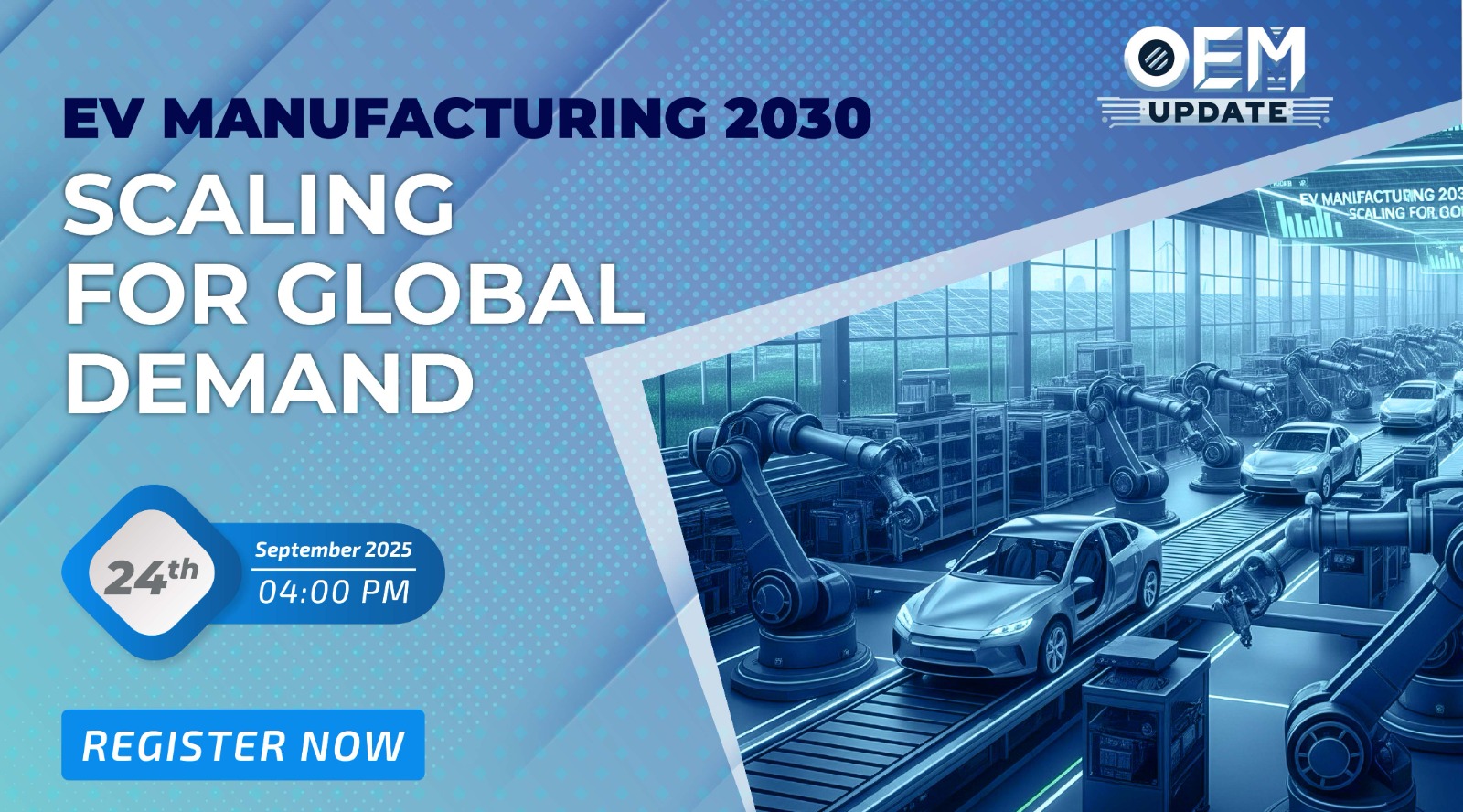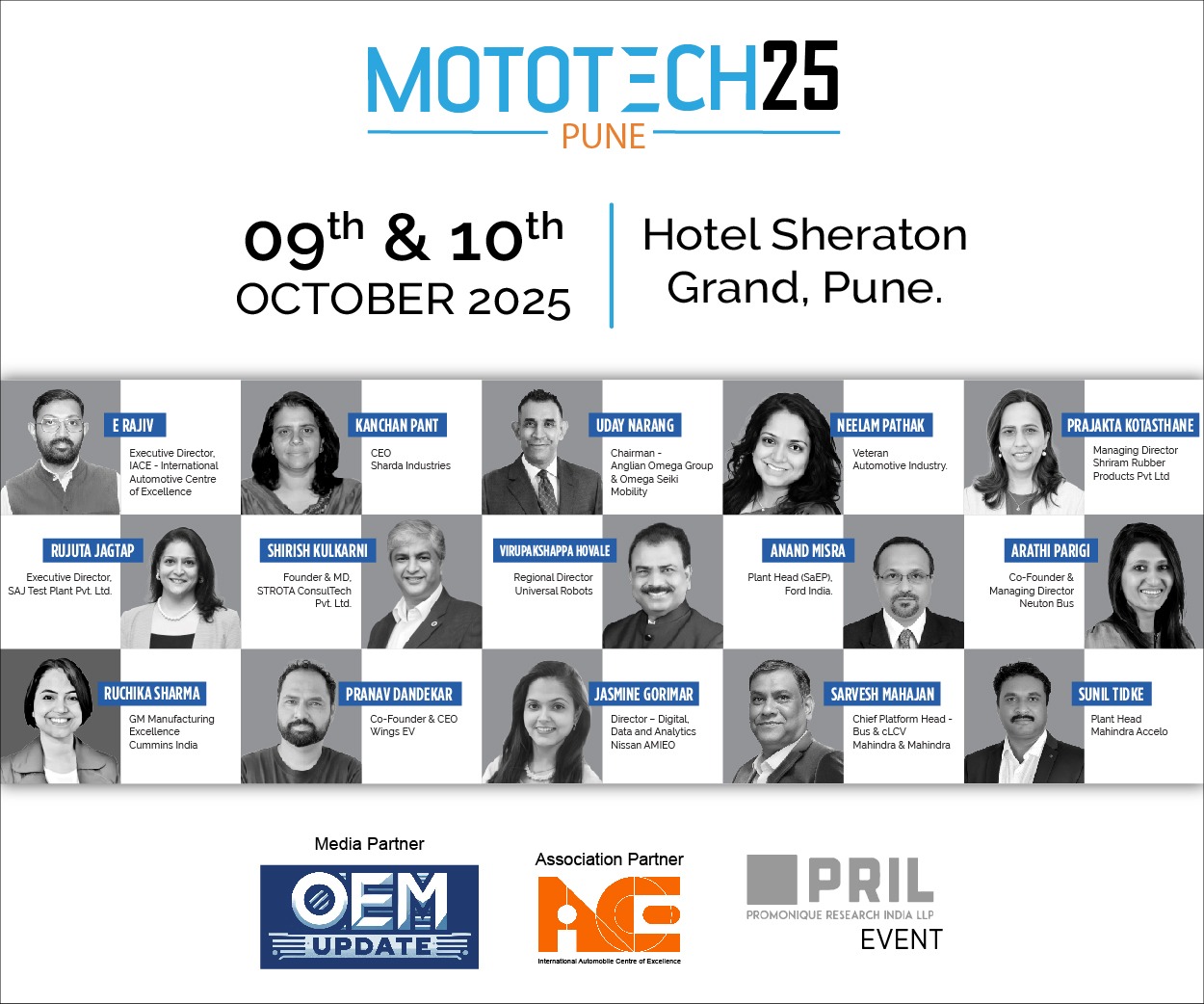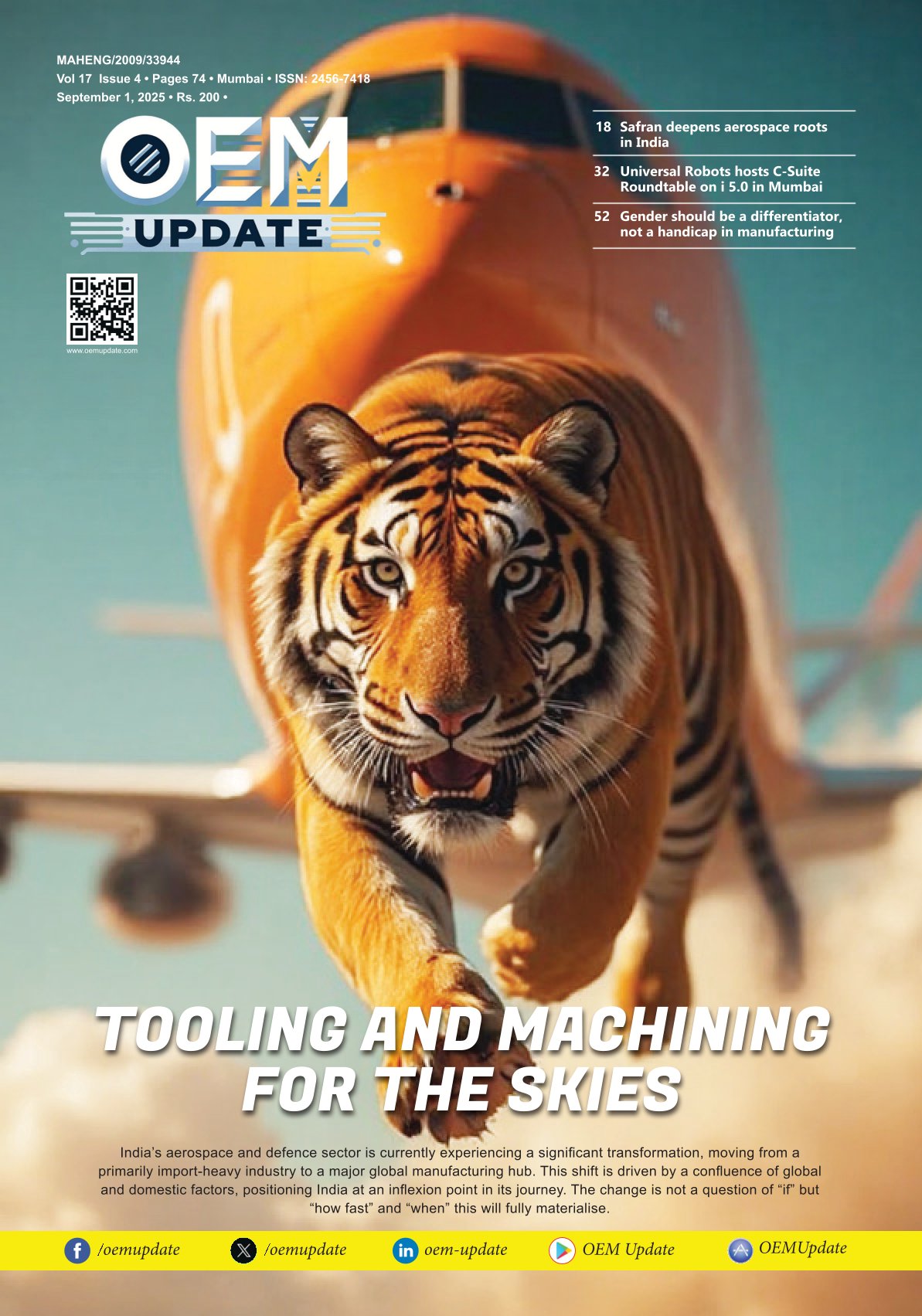New technology versed workforce is in demand
By OEM Update Editorial November 30, 2021 8:01 pm IST
“We are fully prepared to embrace universal automation in our pursuit to create nextgen industries.”
What is your perception about the automation and robotics market with increasing digitalisation?
Increased digitisation and automation have led to the birth of an interconnected workspace cohabited by humans and machines to achieve higher efficiency, productivity, resilience, and sustainability. Industries across the spectrum are keenly observing the trends and are showing a positive response towards integrating digital technologies in their business processes. The findings of a McKinsey report state that 60 percent of all occupations have at least 30 percent of their activities that can be automated. Moving forward, automation is going to be an inevitable business characteristic. The growing appetite for digital transformation guarantees an upward trend for the automation and robotics market. It is slated to act as a strong pillar for reviving growth, boosting production, and furthering the vision of an Atmanirbhar Bharat. Indian businesses are eagerly pushing the pedal on automation and by global comparison, we are not far behind advanced economies. It is easier to make good quality, customisable products quickly with advanced technologies. Manufacturers need to match the pace of changing consumer behaviour and that’s where automation and robotics can make a major difference. The recent challenges further demonstrate how automation can contribute in achieving business continuity. For India to become an export hub, the adoption of automation technologies by industry players would be a critical factor.
How to evaluate the demand for automation, AI and robotics in bridging the technological gap in Indian industries?
As India marches towards becoming a global manufacturing hub, it is necessary to integrate the latest technologies and innovations in business practices to gain a competitive edge. While the automotive industry continues to be one of the largest adopters of automation, the demand is picking up in other sectors as well. Digital technologies like Artificial Intelligence, Machine Learning, deep learning, and IIoT are making automation agile, flexible, and customisable. For instance, new consumption patterns of the growing middle-class have led to the adoption of automation in the consumer packaging segment. A similar trend can be seen in food and beverage, electronics, and the logistics industry. The Indian industrial automation market is expected to grow at a CAGR of 10 percent in years to come. The demand would largely be driven by Tier-1 players eager to leverage the power of new innovations. The adoption of automation in MSMEs is low but they are gradually catching up.
To ensure safety and security what measures will you suggest to manage automated industries in manufacturing?
Over the years, automation has become increasingly popular among organisations for reasons like increased efficiency and cost cutting benefits. While these are important features, it is the safety and security aspect that heightens the implementation of such technology among companies. Although industries have been focussed on safety and security, recent threats to critical infrastructure have prompted manufacturing companies to tighten security measures. Reducing vulnerabilities to plant automation systems and other critical assets is necessary to help ensure the safety, reliability, integrity, and availability of these systems.
The current industrial automation architectures have served us well until now, however closed proprietary technology has made it difficult to embrace advanced technologies quickly and efficiently, while also maintaining safety and security. Fortunately, adoption of a known standard, IEC 61499, for interoperability and portability can alleviate the challenge. It defines a high-level system design language for distributed information and control systems.
Based on the IEC61499 standard, Schneider Electric provides a unique offering to the Industrial automation segment called the EcoStruxure Automation Expert. This next-generation industrial automation system helps in creating step-change improvements throughout the complete lifecycle. It supports an incredibly agile, assent-centric automation architecture where performance can be controlled throughout the entire automation lifecycle to deliver real, measurable improvements to all business variables, most notably profitability.
How far are Indian SMEs prepared for industry 5.0?
The MSME sector forms the backbone of the Indian economy contributing about 30 percent of the country’s GDP, driving employment and crusading exports. They are a formidable part of the supply chain and their preparedness to integrate the latest technology has the potential of strengthening the value chain. However, they have been rather slow in adopting automation. MSME’s need the proof-of-concept of the technology first. As a result, they might lag behind in the ongoing digital wave. Given their role in promoting inclusive development, if MSMEs miss the global automation journey, it will exacerbate economic inequality. The current environment and policy support around the Atmanirbhar Bharat initiative opens up avenues for the MSME’s to emerge as strong players in the market. Entrepreneurs must keep the thought of automation at the back of their minds to reap its benefits in the long term.Industry 5.0 is set to revolutionise manufacturing by achieving greater synergies between humans and machines to improve the means and efficiency of production. While Industry 4.0 introduced ‘smart’ machines, Industry 5.0 would define the notion of machine-assisted humans. In simple terms, it is like adding a human touch to Industry 4.0. The collaboration between humans and robots is bound to increase in the near future and therefore it is essential to turn robots into ‘cobots’. Industry 5.0 is still in its nascent stage and keeping an eye on its development is necessary for business players to formulate their future strategies.
Many see technology and digitisation being a key factor in driving the sector’s growth? What is your opinion?
The manufacturing sector is one of the key contributors to India’s growth and the country has envisioned pushing its manufacturing contribution to at least 25 percent of the National GDP by 2025. To achieve this, the sector needs to become an integral part of global supply chains and possess core competence over global competitors. By doing so, India has the opportunity to raise its competitiveness and become a manufacturing hub. By integrating technology, Indian manufacturing companies can design products and provide disruptive solutions that have a global potential.
At present, digitisation in India runs parallel with global efforts, with limited scale. However, for it to be successful, companies including small and medium enterprises need to scale up the adoption of such technologies. A silent pillar of India’s socio economic progress, around 60 million MSME players contribute 45 percent of the total industrial production and 40 percent of its total exports, as per Confederation of Indian Industry (CII). Given their role in providing inclusive development, if SMEs miss the global automation journey, it will exacerbate social inequality and prevent underprivileged communities from benefiting through modern development. Therefore, it is necessary for SMEs to be mainstreamed into Industry 4.0 as it will benefit not only organisations, but also the government and society at large.
Can you share challenges and opportunities in adopting factory automation and robotics for manufacturing units?
The opportunities provided by factory automation and robotics for manufacturing units are immense. That’s the wonder of technology – effective and impactful deployment of technology can help businesses achieve a higher level of productivity and maximum efficiency. Automation has made the process of manufacturing easy and cost-effective as the factory is operating at optimum levels. By removing mundane tasks, it has opened up space for newer innovations and creativity. Job aspirants today are digital natives seeking roles that can test their competencies. They are eager to work on new technologies and widen their horizons. It is a win-win situation for everyone – the employers as well as the employees. The employer has the responsibility of building safe workspaces for their employees. There is nothing more valuable than human life. Automation has added a safety layer in factories by transferring dangerous tasks to machines.
However, the challenge is more psychological in nature than physical. Historically, automation was considered costly, as it meant a complete overhaul of the factory’s process. Additionally, it was difficult to upgrade the traditional proprietary systems. Fortunately, that is not the case anymore. With universal automation, it is possible to build interoperable systems with customisable features to target specific issues. At Schneider Electric, we believe that universal automation has the potential to change the face of automation. We are fully prepared to embrace universal automation in our pursuit to create next-gen industries.
What future do you see for humans interface with machines and robotic displacing physical workers?
The question assumes that AI and humans have the same qualities and abilities, but in reality, they don’t. While AI is perfectly suited for lower level routine tasks that are repetitive in nature, human abilities and more expansive. Contrary to machines and robots, we humans have the ability to imagine, anticipate, feel, and judge changing situations, which allows them to shift from short term to long-term concerns. Speaking of whether machines and robots will displace physical workers, I believe that it will rather create demand for a new technologically versed workforce which will work closely with such technology. The idea is to use a collaborative model to maximise potential and output.
Cookie Consent
We use cookies to personalize your experience. By continuing to visit this website you agree to our Terms & Conditions, Privacy Policy and Cookie Policy.
















